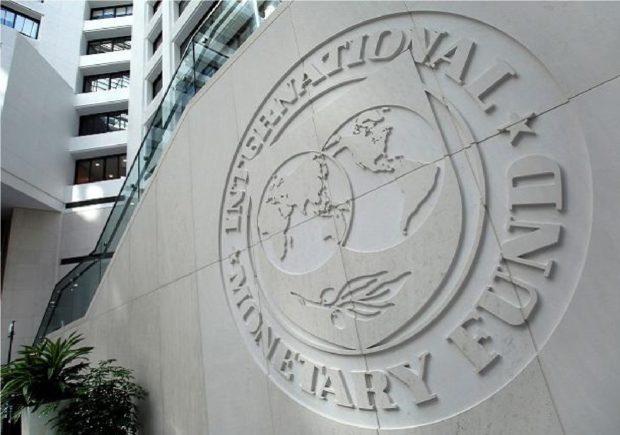
Covid crisis in India a warning of possible events in other low- and middle-income countries: IMF
PTI, May 22, 2021, 10:27 AM IST

Observing that the ongoing “catastrophic” second wave of COVID-19 in India is a sign that the worst may be yet to come, the IMF has said that the situation in the country is a warning of the possible events in low- and middle-income nations that have seemingly escaped the pandemic till now. A report co-authored by International Monetary Fund (IMF) economist Ruchir Agarwal and its Chief Economist Gita Gopinath on Friday also said that under the business-as-usual scenario, the vaccine coverage in India is expected to remain under 35 per cent of the population by the end of 2021.
“The ongoing catastrophic second wave in India, following a terrible wave in Brazil, is a sign the worst may be yet to come in the developing world,” it said
While India’s health system held up fairly well in the first wave, this time its health system is so overwhelmed that many people are dying because of a lack of medical supplies like oxygen, hospital beds, and medical care, the report said.
“India is a warning of possible events in other low- and middle-income countries (LMICs) that so far have seemingly escaped the pandemic, including in Africa,” it said.
For India, the report said, current bilateral purchases of vaccine plus coverage from COVAX will cover about 25 per cent of its population by the first half of 2022.
To get to 60 per cent coverage, India will need to immediately place sufficient vaccine orders of about 1 billion doses through contracts that incentivise investment in additional capacity and augmentation of the supply chain.
“In this context, the authorities’ recently announced financing of about USD 600 million to the Serum Institute of India and Bharat Biotech to boost production capacity in the near term is a welcome step,” the report said, adding that authorities estimate that two billion doses will be available by the end of 2021.
Efforts should be made to ensure that the projected production capacity will materialise without delay, including through securing the supply chain for raw materials—supported by international efforts to eliminate export restrictions on all critical inputs, it added.
In its report, the IMF said that an urgent focus should be to eliminate constraints on cross-border exports of critical raw materials and finished vaccines. Free cross-border flow of vaccine inputs and supplies is essential for the world to achieve its vaccination targets without delay.
Governments are taking steps to relax such constraints on raw materials, it said, citing the recent pledge by the US to facilitate greater access of critical raw material to Indian manufacturers after severe shortages emerged.
However, there is scope for greater multilateral action on this front, as significant constraints still remain, it said.
The IMF report said India continues to face production bottlenecks, including due to ongoing shortages of critical raw materials, suggesting the need for further relaxation of de facto export restrictions under the US Defence Production Act.
Despite such near-term constraints, as of mid-May 2021, the authorities estimate that over two billion doses will be available by the end of the year based on company-level supply projections publicly shared by officials.
“Therefore, while current pre-purchases of vaccines plus coverage from the COVAX AMC remains around 25 per cent, the authorities intend to meet the residual needs through the additional production,” it said.
To reach a coverage of 60 per cent of the population, India will need to order roughly one billion doses of additional vaccines.
“Given the authorities are expected to comfortably use domestic resources for meeting these residual needs and are not seeking external financing for these purposes, we do not allocate additional funds for India in our budgeting exercise,” the IMF said.
Indian authorities are currently pursuing a strategy of procuring vaccines for those above 45 years of age by the central government while enabling states to procure vaccines for those aged 18-44.
Given the current vaccine pricing offered by domestic suppliers, and the estimated size of the younger population in India, the additional funding needs for the centre for covering the 18-44 population is approximately 0.25 per cent of the GDP, suggesting that there is scope for the government to handle the entire procurement centrally, it said
Udayavani is now on Telegram. Click here to join our channel and stay updated with the latest news.
Top News

Related Articles More

Budget Wishlist: Financial sector seeks tax sops, steps to deepen financial markets

India’s manufacturing growth hits 12-month low in Dec amid softer rise in output, new orders

Stock markets start 2025 on high note, snap two-day decline on buying in bluechips

Rs 2000 notes withdrawal: Rs 6,691 cr worth such notes still with public

Petrol, diesel sales soar on holiday travel
MUST WATCH
Latest Additions

President Droupadi Murmu hails NIMHANS for its integrated medicine services

India always stood by Maldives: EAM Jaishankar

Periya twin murder: CBI Court sentences 10 to double life imprisonment

Woman jumps out of moving autorickshaw to save herself from drunk driver

New day, same story: ‘King’ Kohli fails again; India collapse to 185
Thanks for visiting Udayavani
You seem to have an Ad Blocker on.
To continue reading, please turn it off or whitelist Udayavani.




















